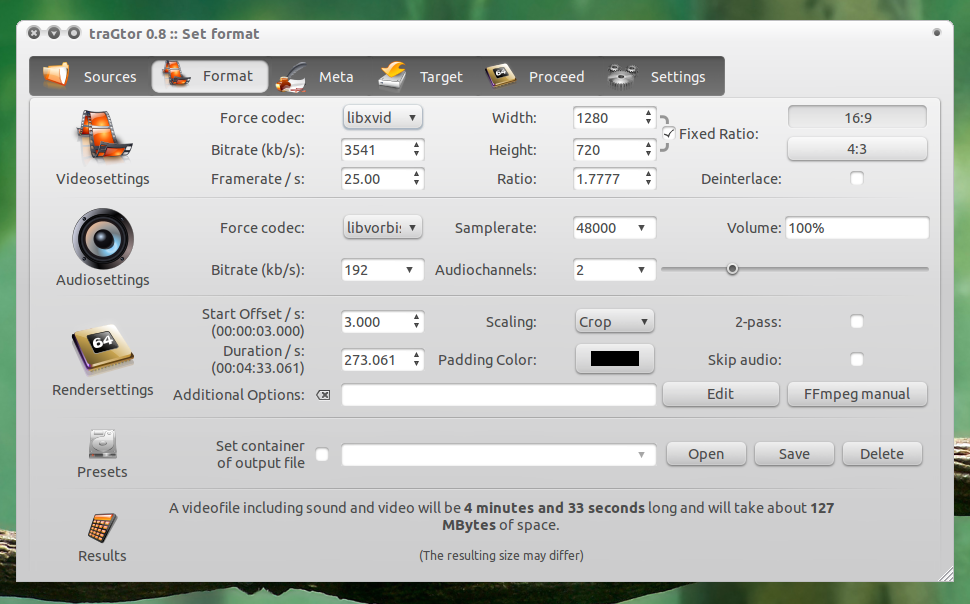

- #FFMPEG LIBRARY VIDEO FRAME RATE SOFTWARE#
- #FFMPEG LIBRARY VIDEO FRAME RATE LICENSE#
- #FFMPEG LIBRARY VIDEO FRAME RATE FREE#
įFmpeg is part of the workflow of many other software projects, and its libraries are a core part of software media players such as VLC, and has been included in core processing for YouTube and Bilibili.
#FFMPEG LIBRARY VIDEO FRAME RATE FREE#
Among included libraries are libavcodec, an audio/video codec library used by many commercial and free software products, libavformat (Lavf), an audio/video container mux and demux library, and libavfilter, a library for enhancing and editing filters through a Gstreamer-like filtergraph. It is widely used for format transcoding, basic editing (trimming and concatenation), video scaling, video post-production effects and standards compliance ( SMPTE, ITU).įFmpeg also includes other tools: ffplay, a simple media player and ffprobe, a command-line tool to display media information. At its core is the command-line ffmpeg tool itself, designed for processing of video and audio files.
#FFMPEG LIBRARY VIDEO FRAME RATE LICENSE#
Unredistributable if compiled with any software with a license incompatible with the GPL įFmpeg is a free and open-source software project consisting of a suite of libraries and programs for handling video, audio, and other multimedia files and streams. X86, ARM, PowerPC, MIPS, DEC Alpha, Blackfin, AVR32, SH-4, and SPARC may be compiled for other desktop computers sh file beginning with a Bash shebang, which determines how the script will be executed.Various, including Windows, macOS, and Linux ( executable programs are only available from third parties, as the project only distributes source code) Since Bash is required for the uppercasing, let's place these commands inside of a. To uppercase every letter in the title, place the ^^ symbol of Bash 4 at the end of the title's variable via parameter expansion ( $). Like the duration, the title must also be extracted from the input media's information. Let's tidy up this thumbnail by substituting the placeholder title with the actual title, uppercasing this title, changing the font to "Open Sans" and moving the duration box to the bottom-right corner. Writing a Bash Script for Generating Thumbnail # Note: Alternatively, you could get the video's duration via the ffprobe command. To set the background color of this box, provide the boxcolor parameter. To place the duration within a box, provide the box parameter and set it to 1 to enable it. Here, we use two drawtext filters to modify the input media: one for writing the title text "Test Text" and one for writing the duration "00:00:10". This duration is stored within a variable DURATION so that it can be injected into the text passed to drawtext. We pipe the information outputted by the -i option directly to grep to search for the line containing the text "Duration" and pipe it to cut to extract the duration (i.e., 00:00:10 for ten seconds) from this line. Therefore, we must extract the duration from the input's information, which is outputted by the -i option.Ģ>&1 redirects standard error ( 2 for stderr) to standard output ( 1 for stdout).

Unfortunately, there's no convenient variable like w or tw for accessing the input's duration. This thumbnail image will be a JPEG file. Let's test the drawtext filter by extracting the thumbnail image from the beginning of the video and writing "Test Text" to the center of this image. To write a piece of text onto the thumbnail image, use the drawtext video filter. Connecting multiple filters forms a directed graph called a filtergraph. When a filter finishes modifying the input media, it outputs the result, and this result is piped to the next available filter as its input. A video filter modifies/transforms the media streaming through it, and it is specified with the -vf option.

If the -ss option is not provided to the ffmpeg command, then by default, the frame will be extracted from the 00:00:00.000 ( hour:minute:seconds.milliseconds) timestamp.ĭraw the title and duration onto the thumbnail image via the drawtext video filter. The -ss option ("start timestamp") allows you to pick a timestamp within the video from which to extract the single frame from. The thumbnail only requires an image of a single frame. To generate a thumbnail from a video with ffmpeg:ĭecide on a frame to extract the thumbnail image from via the -ss and -vframes options.


 0 kommentar(er)
0 kommentar(er)
